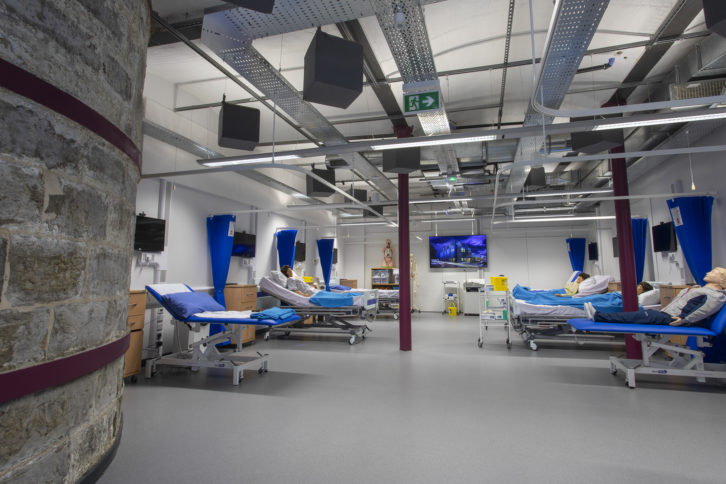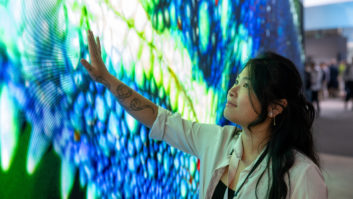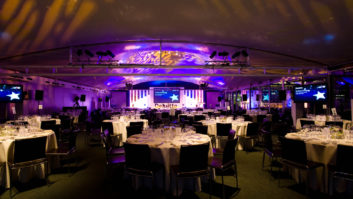
There are specialist AV markets, and then there is healthcare. For when it comes to a sector where the expectations of technology are uniquely demanding – and where faults or failures could actually lead to serious injury or even loss of life – medicine imbues the term ‘mission-critical’ with heightened significance.
Hospitals are noisy, sometimes chaotic environments in which operating theatres and treatment rooms frequently have to deal with rapid turnarounds and unexpected events. Outside of live touring, it’s difficult to imagine circumstances that are more demanding of AV systems in terms of robustness and reliability. Moreover, given the understandable tendency of healthcare professionals to continue using technologies that they know to be tried-and-trusted, expected product lifecycles often eclipse those in other applications.
Hence there is no argument to the observation made by Jim Mergens, CTS, senior sales director at ClearOne, that “medical AV is a specialty market that requires distinct understanding of the unique challenges. It’s very important to know the customer well in order to mitigate the difficulties sometimes encountered.”
But if it’s a market that requires more research and strategising than many others, its inclination towards large-scale investments – often over a period of years, and in multiple phases – mean that it can be highly rewarding for those vendors able to provide the necessary solutions and support.
Surgical precision
It’s a slightly crude demarcation, but the challenges of the medical AV sector can broadly be separated into two categories – organisational & financial and environmental. Referring to the NHS in particular, Pure AV group sales director Aidan Crowe provides a capsule summary of the protracted processes that can often precede a commitment to invest in new systems.
“Selling into healthcare, you must be prepared for lengthy sales cycles and budgets that can suddenly disappear, only to reappear several months later”
Aidan Crowe, Pure AV
“Selling into healthcare, you must be prepared for lengthy sales cycles and budgets that can suddenly disappear, only to reappear several months later,” he says. “And while there can be resistance to change in technology from staff already overburdened with the delivery of patient care, the NHS itself is subject to continual structural change. Having an understanding of the formal procurement procedures and securing a position on the relevant frameworks is only one part of the process. The ability to understand the informal landscape of influencers and connectors, and then gain sponsorship from those who don’t necessarily hold the budget but who will guide the specification and assist the successful adoption of your solutions, is often just as important.”
Not surprisingly, budget is almost invariably a primary consideration. “Our experience is that the client is looking for the latest, highest-spec and future-proof solution, but is unlikely to have the budget to achieve this,” says Crowe. “The key is to deliver the desired end-user experience and work creatively to help to achieve a [required] budget. In some ways this forces innovation and creative design; however, as many of the applications are used within high pressure or time-critical situations, this must always be within the context of reliability and ease of use.”
For ClearOne – whose off-the-shelf DSPs are used by prominent medical equipment companies selling complete systems into the healthcare sector – Mergens remarks that “the main challenges are related to the environment in which the equipment operates. For example, when AV equipment is taken into a surgical suite, it’s easy to see how it’s a very challenging environment. There are very loud air machines pumping in a very large amount of air, as well as tall ceilings to control the temperature and air quality, hard surfaces, no carpeting and no drop ceilings. On top of those challenges, the person that’s speaking is typically wearing a mask or some type of face shield, so voices are muffled and the positioning of a clip-on microphone is challenging.”
Stijn Ooms, technology director at Crestron Europe, draws an important distinction between the requirements of medical training facilities and actual surgical/treatment spaces. “When [the AV] is solely for educational purposes such as transmitting images to the auditorium, or for control of lighting, temperature and entertainment in patient rooms, the challenges do not differ a lot to those of other markets,” he says. “But if you are looking at the true healthcare solutions, for instance medical imaging [and] certainly during operations, the regulations and rules are very strict.
“There are the obvious requirements, such as the equipment [having to be] very hygienic and easy to clean. It is also obvious that you can’t expect a surgeon to operate a touch panel during non-robotic surgery. But there are also requirements that a non-expert wouldn’t immediately think of. One example is that the airflow direction is heavily regulated inside an operating room, which means that it is not permitted to have equipment with a fan close to the operating table.”
EU device directive
For companies looking to explore the opportunities that undoubtedly exist in healthcare, there is one directive above all with which they must become familiar: the European Union Medical Device Regulation (Council Regulation 2017/745), which came into force on 25 May 2017.
“As soon as medical devices are involved, that directive of the EU details the essential requirements manufacturers and importers must meet,” explains Ooms. “And ‘medical devices’ is a very broad term: every instrument, apparatus or appliance that is used to diagnose, monitor or treat a disease, injury or handicap in humans falls into that category. Which means that tongue depressors are medical devices, [as are] laser surgical devices, ultrasound devices, x-ray machines, etc.”
Essentially there are two ways for companies to proceed as regards satisfying the terms of this directive. “If you manufacture standalone medical equipment, you can have your product pre-approved,” he says. “But if you install a complete project of which the medical AV is part, the entire solution must be assessed on compliance with the directive by an EU Notified Body. [So it is fair to say] that knowledge of these types of requirements and regulations is the largest barrier for entry into the medical AV sector.”
www.clearone.com
www.crestron.com
www.poly.com
www.pureav.co.uk
http://pro.sony.eu







